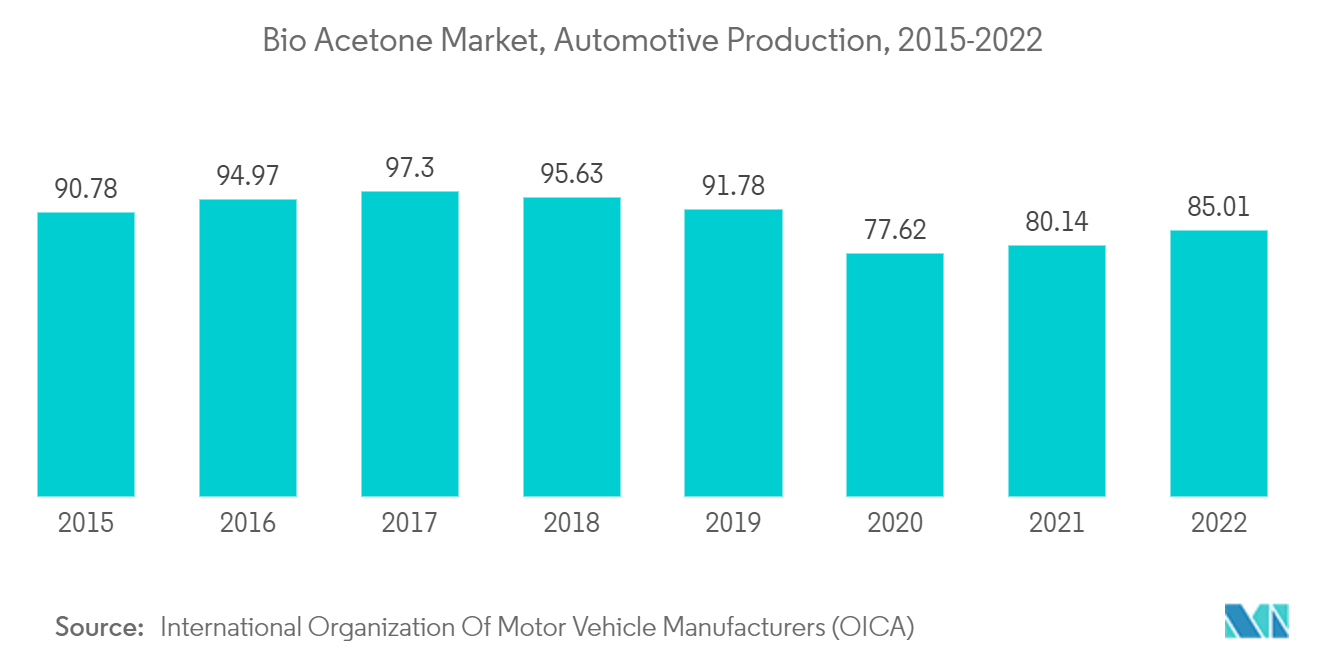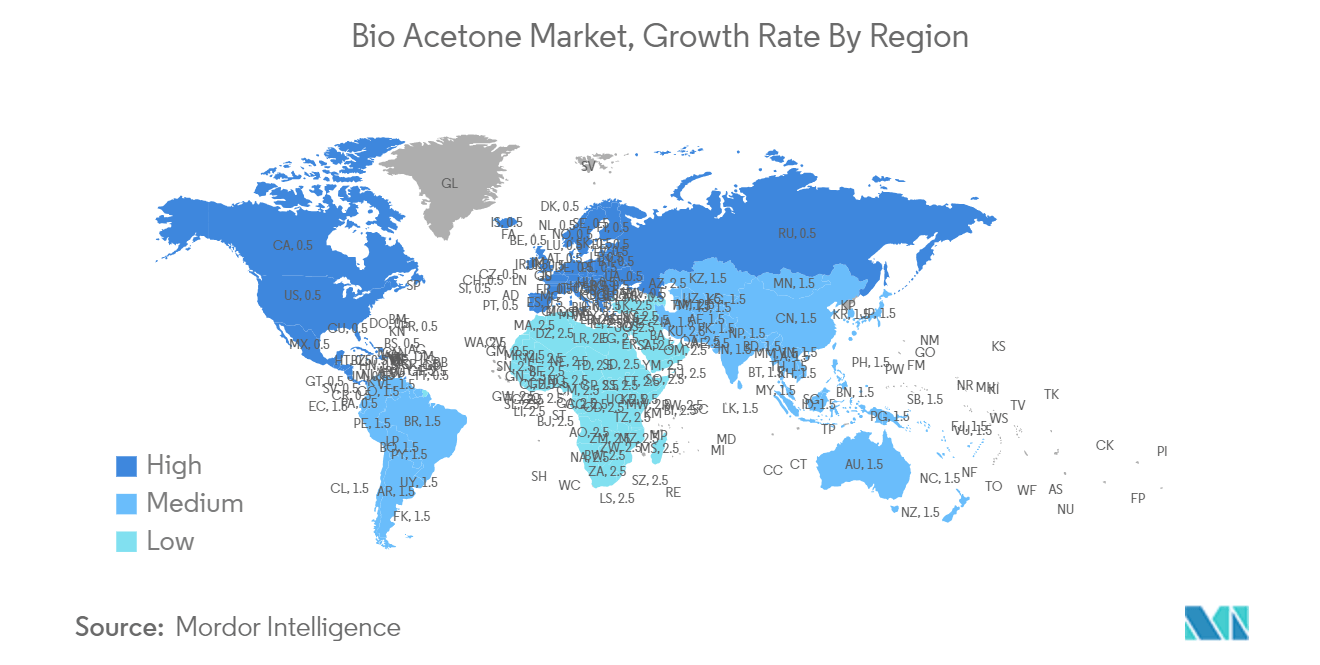Market Trends of Bio-Acetone Industry
Growing Demand For Bio-Based Paints and Coatings
- Bio-acetone is a renewable version of regular acetone and has the same characteristics as acetone with identical chemical properties.
Some of the advantages of bio-acetones include:
- They are safe and non-carcinogenic. They are high-performance solvents and can be used in various paints and coatings.
- They are made of renewable sources and are bio-degradable. They are effective in polyurethane paints, UV-curable coatings, enamels, and varnishes.
- They are used as thinners in paints and coatings manufacturing. Paints and coatings are used in various applications, including automotive, construction, packaging, furniture, textiles, and other applications.
- Many industries have started using products with low volatile organic compounds (VOC), and the increase in VOC regulations has led to a rise in demand in the market in recent times. Since bio-acetones are manufactured from plant-based raw materials such as corn, bio-solvents are used mainly in lower VOC-based paints and coating products.
- In the automotive industry, the demand for bio-based coatings is increasing owing to various VOC regulations. Bio acetone is used as a solvent in bio-based coatings and is applied to various applications such as dashboards, steering wheels, door trims, and other automotive vehicles.
According to the latest data released by the International Organization Of Motor Vehicle Manufacturers (OICA), the total number of vehicles manufactured in 2022 was around 85 million units compared to 80 million in 2021.
- In addition, there has been a rise in electric vehicle manufacturing in various countries, further propelling the demand for bio-based coatings in the automotive industry.
- Due to the rise in VOC regulations in various countries, the demand for bio-based paints and coatings is on the rise, which is expected to positively impact the demand in the market during the forecast period.

Europe To Become the Largest Consumer
- Europe is expected to be one of the largest consumers of bio-acetone due to various regulations set up for renewable-based products.
- The VOC emission from the coatings industry has raised various environmental and human health issues. This has led various countries to follow the directives laid by the European Union in the coatings industry.
- The European Union has started the implementation of the VOC solvents emission directive (SED) to reduce VOC emissions from industrial activities, including the paints and coatings industry.
- The SED has set up emission limits for VOCs and requires industries such as paints and coatings manufacturing to use low-VOC or zero-VOC-based solvents in the manufacturing process.
- In the cosmetics industry, bio-acetone is used as a nail polish remover owing to its superior characteristics and low toxicity compared to acetones.
- According to Cosmetics Europe, the personal care association, the cosmetics industry was valued at EUR 88 billion (~USD 94.9 billion) in 2022.
- The largest cosmetics markets in the region are Germany, France, Italy, the United Kingdom, and Poland. All these countries account for more than 67% of the total cosmetics market in the region.
- All these factors are expected to drive the demand for bio-acetones in various European countries during the forecast period.


